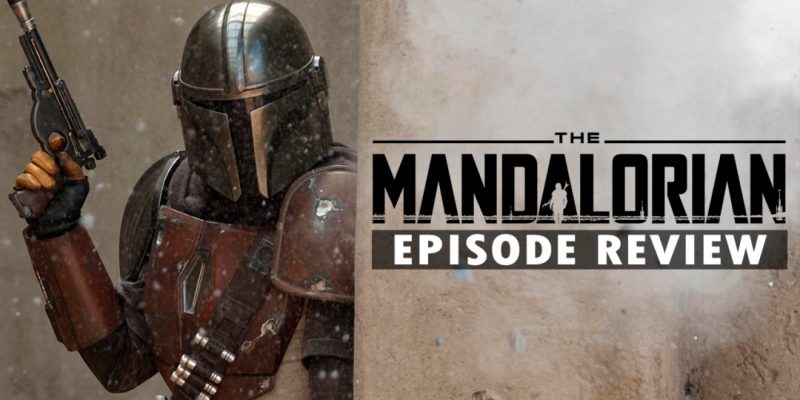This review contains spoilers for The Mandalorian, “Chapter 6: The Prisoner.”
It’s becoming clear that the longer The Mandalorian goes on, the less interested it is in telling a single, organic story. As fun as the first three episodes were, they unfortunately set a precedent that the rest of the show isn’t following up on. Since “Chapter 4: Sanctuary,” we’ve been given one-off episodes where the Mandalorian (Pedro Pascal) takes on a variety of missions across the galaxy. The Mandalorian is starting to feel like an anthology series set inside of the Star Wars universe. That isn’t to diminish the overarching plot, where the Mandalorian is hunted by the guild and his efforts to protect the Child, but they’ve taken a back seat to each episode’s individualized focus.
Like all anthology series, the quality of each episode will vary wildly from person to person, and “The Prisoner” is no different. This time, The Mandalorian is interested in experimenting with the tropes of a heist movie, which strikes me as an odd choice. It hasn’t been all that long since Solo, which also functioned as a heist movie set within the universe — and one that clearly had a far larger budget than “The Prisoner,” which takes place inside a prisoner transport ship with generic hallways and even more generic new characters. It just seems odd to mimic a genre that Star Wars already explored recently — and quite well at that.
Like last episode, the Mandalorian needs cash, so he takes up a job from an old friend to bust out a prisoner on a New Republic prison ship. In order to get the job done, the Mandalorian is going to need to join a crew of outlaws, all of whom are boring at best and grating at worst. Despite being named characters, I couldn’t for the life of me bother to remember who they were outside of their general description and one personality trait. Clancy Brown (from Highlander) is the muscle, Bill Burr (from F is for Family) is the leader, Richard Ayoade (from The IT Crowd) is the analytical droid, and Natalia Tena (from Game of Thrones) is the femme fatale. They never once expand beyond their tropes and barely contribute anything of value to the show beyond being plot devices.

The one interesting topic that gets discussed is the Mandalorian’s past. Up until now, all of the people that he’s encountered on his missions have only just met him, but several of the characters introduced in “The Prisoner” are not only familiar with him, but they’ve worked with him before. We get hints at just how bloodthirsty of a bounty hunter he was, which is a far cry from the hunter we’ve seen over the past season. I didn’t realize until now just how much of a pacifist the Mandalorian has become, and it is interesting to see. When faced with having to murder an innocent man who’s just doing his job on the transport cruiser, he opts to take the peaceful route while the Mandalorian from episode one would have probably been more likely to kill him and be done with it.
That being said, most of these moments are only implied about him. While Tena teases the rest of the crew about how bloodthirsty and violent the Mandalorian was, we never get concrete examples. We’re left to imagine what he’s done, which I find to be far more interesting than having us told specifically what he did. Sometimes things are best left to our imagination.
Once the crew has assembled, they proceed with their heist attempt, only for it to naturally fall flat on its face. Like last episode as well as “The Sin,” the Mandalorian is betrayed, he exacts sweet vengeance on the people who wronged him, and he goes about his merry way. There was so much potential to have a compelling heist that could have pushed the crew — including the Mandalorian — to their limits, but instead the show falls into familiar patterns. The Mandalorian takes a job, it goes fine until he’s betrayed, he gets his revenge, roll credits.

It would be one thing if we saw the Mandalorian brutally defeat each of his turncoat crew members for just how unlikeable they are, but they’re so bland that there’s not even any satisfaction in watching them get beaten. It should be thrilling watching the Mandalorian sneak up on Bill Burr in a flickering hallway like some kind of a slasher villain, but instead of taking him down with a bang it feels more like a thud. No catharsis, no satisfaction, just another bad guy to take down.
There is something to be said about how satisfying the ending is once the heist is completed, watching the Mandalorian keep his promise and drop off the prisoner, only for him to sic some New Republic X-Wings on the station as payback for double-crossing him. While I still think that the Mandalorian as a character has as much personality as the cold vacuum of space he flies around in, at least “The Prisoner” shows that character does not necessarily equal personality. This was the Mandalorian at his most protective and fatherly with the Child, keeping him safe on the ship and quipping with him after leaving to go on another adventure. (Though I still question why he would just constantly surround the Child with people who clearly have no problem killing him. Father of the year, ladies and gentlemen.)
While I didn’t enjoy “The Prisoner” quite as much as I did “The Gunslinger,” it had more of a sense of self and purpose than “Sanctuary” did. I enjoyed it despite how forgettable it was at times. This episode is let down by a supporting cast of characters with no personality, but at least the Mandalorian himself was able to carry the burden with his vicious-as-always battle tactics and a partial examination into his character and past.
